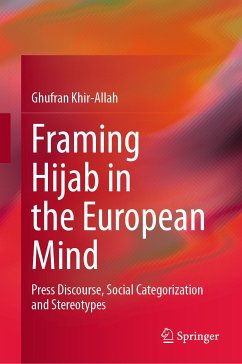Based on an analysis of 108 articles published in the national newspaper from each context, this comparative study operates on two levels: a micro-level analysis of within-culture variations between mainstream culture and the hijab-wearing women; and a macro-level analysis of the cross-cultural variation between the British context and the Spanish one. The result is a profound insight into how each discourse reveals the different level of social integration of hijab-wearing women in these two different contexts.
The Analysis methodology combines between Critical Discourse Analysis CDA, Conceptual Metaphor Theory CMT,and Cognitive Linguistics CL. The book introduces a novel analysis methodology for social and linguistic sciences. It is the Cognitive Critical Discourse Analysis methodology CCDA.
Dieser Download kann aus rechtlichen Gründen nur mit Rechnungsadresse in A, B, BG, CY, CZ, D, DK, EW, E, FIN, F, GR, HR, H, IRL, I, LT, L, LR, M, NL, PL, P, R, S, SLO, SK ausgeliefert werden.









